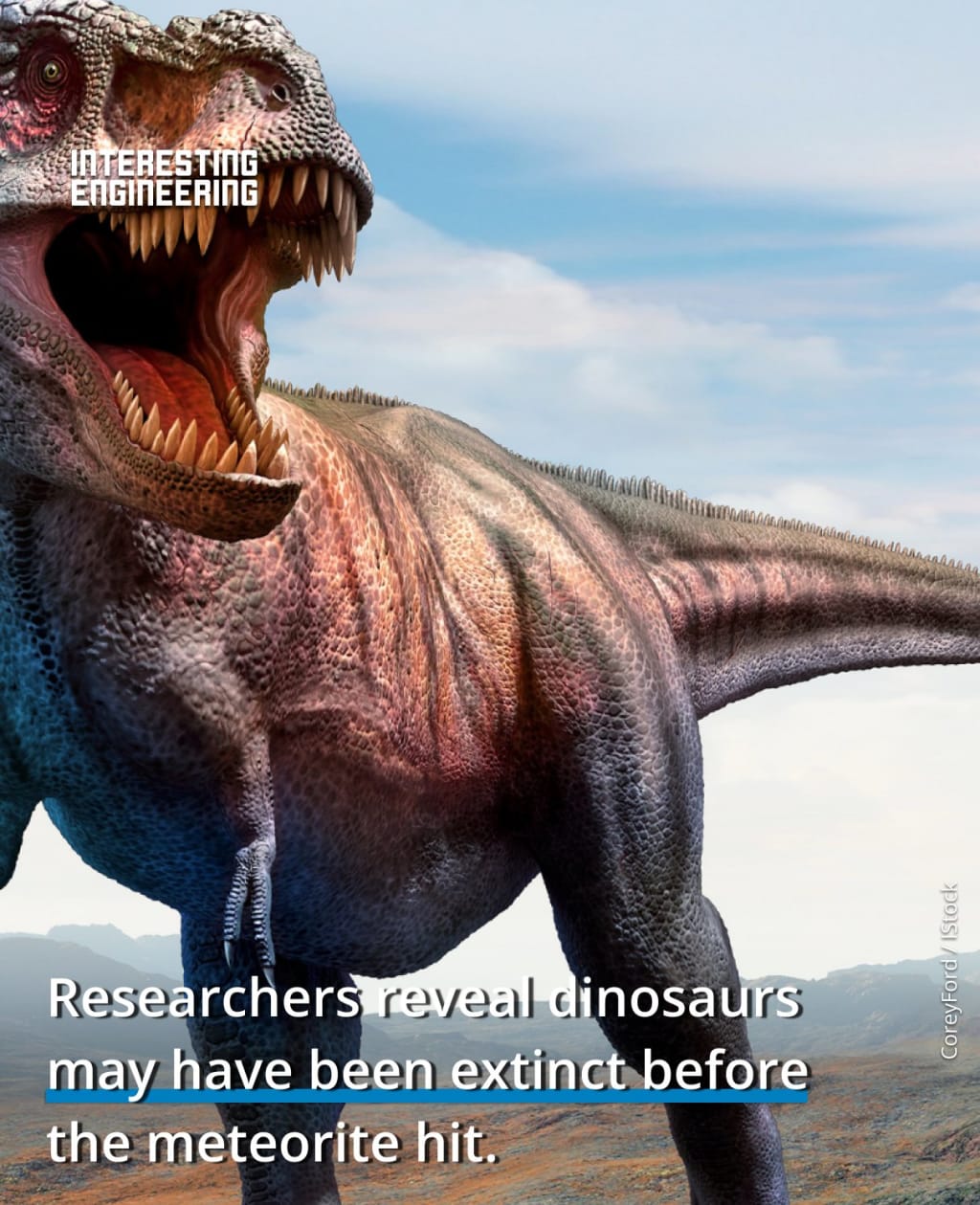
It has become general knowledge that the extinction of the dinosaurs was due to a large meteorite that hit Earth, but according to a new study, we may be wrong.
The general belief was that dinosaurs lived in the Cretaceous period, but new research reveals that dinosaurs may have been extinct long ago.
Researchers from the Chinese Academy of Sciences' Institute of Vertebrate Paleontology and Paleoanthropology (IVPP) and collaborators recently announced that they had discovered evidence to support the hypothesis that dinosaurs were not very diverse before their extinction and declined overall during the Cretaceous period.
The results were published in PNAS on September 19.
The Shanyang Basin in central China produced more than 1,000 preserved dinosaur eggs and eggshells, which the researchers studied. The rock sequences where these fossils were found totaled about 492.126 ft (150 m) in thickness.
By examining and using computer modeling on more than 5,500 geological samples, the researchers were able to determine precise age estimations for the rock layers.
As a result, they were able to construct a timeline for the end of the Cretaceous with a resolution of 100,000 years, marking the moment just prior to extinction. Direct comparisons with global data are possible using this timeline.
1,000 dinosaur egg fossils collected
Based on 1,000 egg fossils from three different species — Macroolithus yaotunensis, Elongatoolithus elongatus, and Stromatoolithus pinglingensis — scientists managed to identify the dinosaurs.
Tyrannosaurus and sauropod dinosaurs also inhabited the area between approximately 66.4 and 68.2 million years ago, according to a few additional dinosaur bones found in the area. Before the mass extinction, central China had a low diversity of dinosaur species throughout the previous 2 million years, as Eurekalert reported.
The results of the research show us that the dinosaurs were already declining before the meteor hit Earth.
What do you know about the Cretaceous period?
The Cretaceous period was approximately 145 to 66 million years ago. It is the Mesozoic Era's third and final period, as well as its longest. It is the longest geological period in the Phanerozoic, lasting approximately 79 million years.
Due to the comparatively mild temperature of the Cretaceous epoch, there were many shallow inland seas because of high eustatic sea levels. While dinosaurs continued to rule the land, these oceans and seas were home to now-extinct marine reptiles, ammonites, and rudists. There was no ice on the planet, and forests reached the poles. New species of mammals and birds also emerged at this time.
Abstract:
Whether or not nonavian dinosaur biodiversity declined prior to the end-Cretaceous mass extinction remains controversial as the result of sampling biases in the fossil record, differences in the analytical approaches used, and the rarity of high-precision geochronological dating of dinosaur fossils. Using magnetostratigraphy, cyclostratigraphy, and biostratigraphy, we establish a high-resolution geochronological framework for the fossil-rich Late Cretaceous sedimentary sequence in the Shanyang Basin of central China. We have found only three dinosaurian eggshell taxa (Macroolithus yaotunensis, Elongatoolithus elongatus, and Stromatoolithus pinglingensis) representing two clades (Oviraptoridae and Hadrosauridae) in sediments deposited between ∼68.2 and ∼66.4 million y ago, indicating sustained low dinosaur biodiversity, and that assessment is consistent with the known skeletal remains in the Shanyang and surrounding basins of central China. Along with the dinosaur eggshell records from eastern and southern China, we find a decline in dinosaur biodiversity from the Campanian to the Maastrichtian. Our results support a long-term decline in global dinosaur biodiversity prior to 66 million y ago, which likely set the stage for the end-Cretaceous nonavian dinosaur mass extinction.
F FDJF FJK FK






Comments
There are no comments for this story
Be the first to respond and start the conversation.